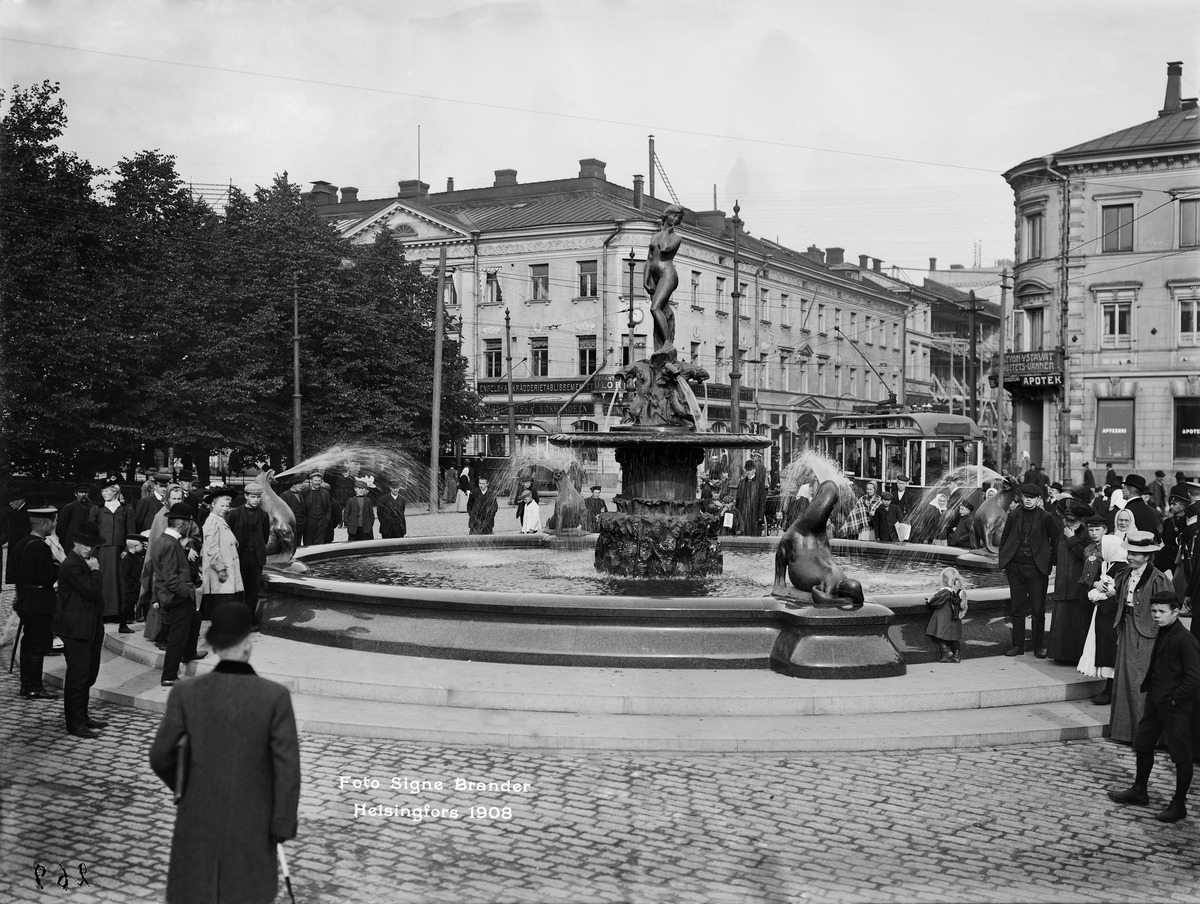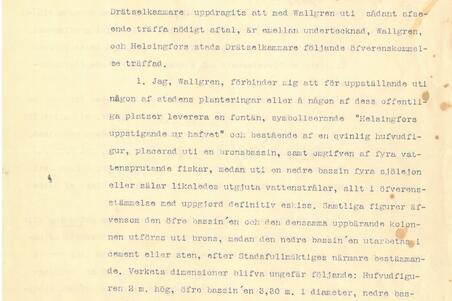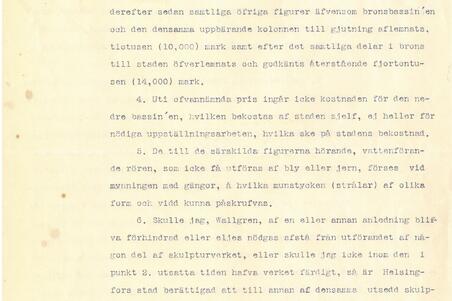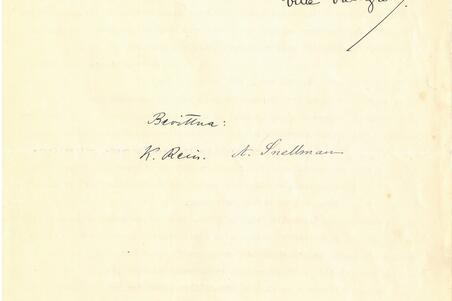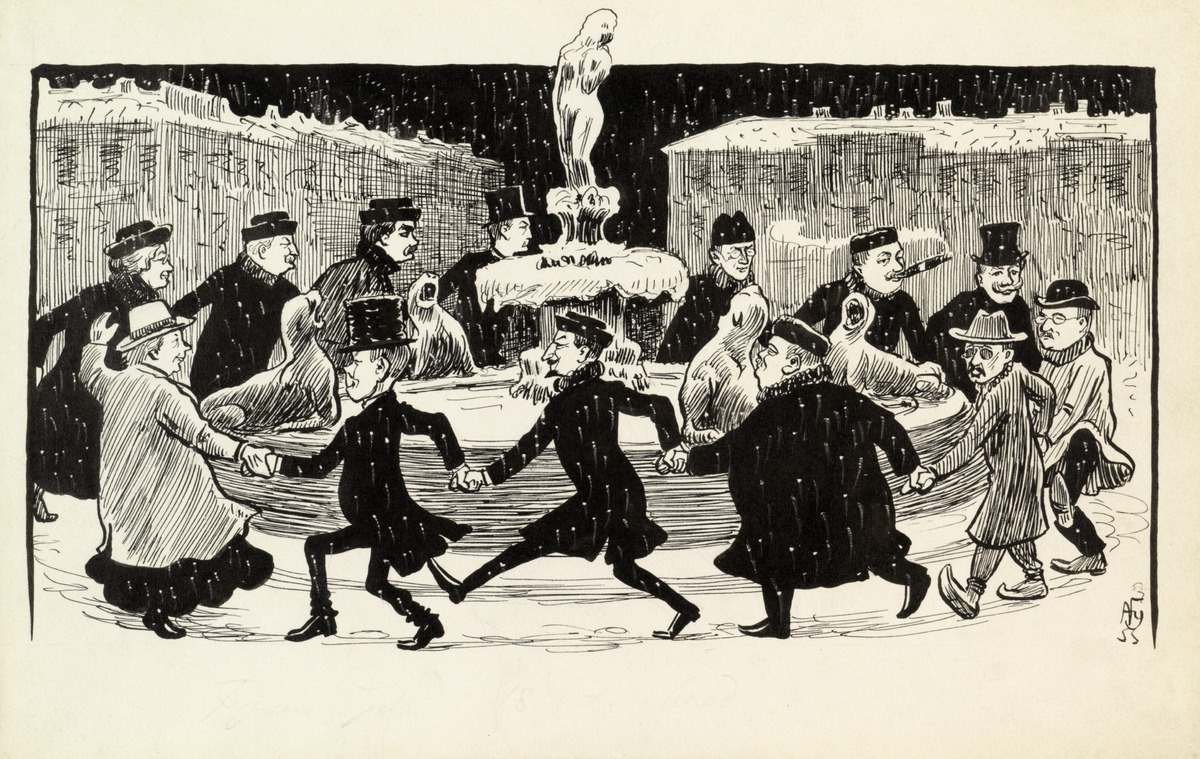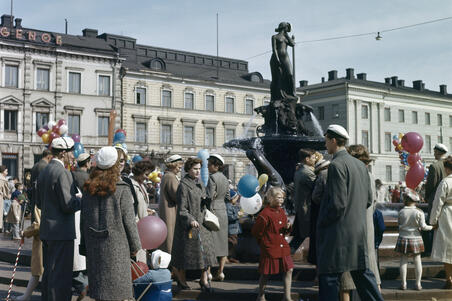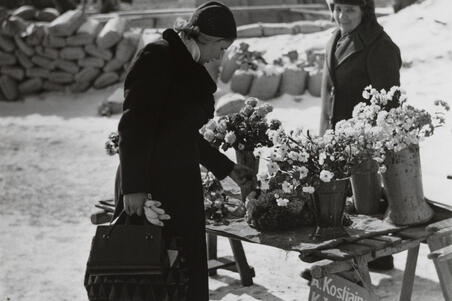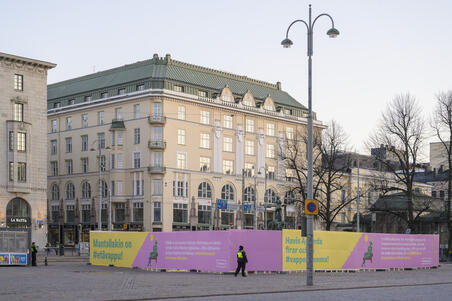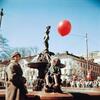Spectacular fountain in the heart of Helsinki
The idea of acquiring a spectacular fountain in a public place in Helsinki was originally emerged from the Finnish Art Society. In 1904, the Finnish Art Society sent the City Council an initiative to acquire a fountain in a central public location in Helsinki and also proposed for a bronze sculpture, created by artist Ville Vallgren, to be a part of the fountain. This initiative was submitted to the City's Finance Chamber, and a year later in October 1905, the Finance Chamber submitted a proposal to the City Council on the acquisition of the fountain, which included, among other things, a proposal to cover part of the cost of the work from the profit of the city-owned liquor and retail joint-stock companies. After this, another year passed, and in October 1906, artist Ville Vallgren and a representative of the City Finance Chamber signed an agreement to purchase a work of art in the form of a fountain at a central public location in Helsinki.
The contract signed by the Finance Chamber and Vallgren specified, among other things, the dimensions of the fountain and the statue, as well as detailing the various elements that the fountain complex should contain. This agreement included mentions regarding, among other things, the four sea lions surrounding the fountain, as well as other marine elements through which the artist wanted to emphasize the symbolism of the work as Helsinki rising from the sea. The contract also defined the price to be paid to Ville Vallgren for the work at FIM 40,000, which would be paid in parts as the production and delivery of the work progressed. In today's money, the amount would correspond to approximately EUR 170,000.
What would be the location for the fountain?
Initially, the various locations in the inner city were considered for the location of the Vallgren fountain, and a roughly matching wood silhouette was used to trial suitable locations, placing it in suitable locations in the city centre. In addition to the final location of Havis Amanda, i.e. the Market Square, a spot in Erottaja was also under consideration, but ultimately, as a result of trials and reflection, it was decided that the statue would stand in its current location on the Market Square, as it was considered to be more suitable due to its spacious environment. For example, at Erottaja, there was concern that the fountain would be overshadowed by the taller building stock surrounding the area.
After Vallgren completed his work in Paris, the fountain complex was disassembled and placed in several boxes. These boxes were transported from Paris to the northern French port town of Le Havre, where they were loaded onto a Finnish steamer named Leo, on board which they arrived in Helsinki presumably on 21 August 1907. However, the City had to wait until the autumn of the following year for the fountain to be assembled and unveiled – the board fences erected around the fountain were modestly torn down without any official festivities on 20 September 1908. We assume that the unceremonious unveiling of the Havis Amanda was at least partially influenced by the active and, in many respects, very critical discussion that the statue had already provoked in advance.
Artist Ville Vallgren
But who was Ville Vallgren, chosen implementer of the fountain in the initiative submitted by the Finnish Art Society? Carl Wilhelm Vallgren (b. 15 Dec 1855), the designer and implementer of the sculpture, was a Porvoo-born artist who has been active in Paris for decades, having used the nickname Ville in most places. As is typical of the era, the surname was originally written as Wallgren.
This eccentric and sociable artist spent most of his active career in Paris, where he and his studio became a kind of reference point for social life among Finnish artists living in the city. Vallgren was a fairly well-known figure in the Paris art scene, who, even before Havis Amanda, had gained fame primarily for his small sculptures, for which he won the Grand Prix at the Paris World Exhibition in 1900. If the City of Helsinki had not ended up ordering Havis Amanda from Ville Vallgren, this would have been a good opportunity to sell his work to the City of Paris as well. In many respects, Havis Amanda can be considered the most famous public artwork of this prolific artist, but it is also possible to admire his work in the busts of artists that decorate the facade of the Ateneum. Vallgren was also very fond of his sculpture and later began to playfully talk about it as his daughter.
Based on historical sources, it has been concluded that the models for Havis Amanda were 19-year-old Parisians Leonie Tavier and Marcelle Delquini, both of whom can be thought to be present in the appearance of the statue. There are two models behind Havis Amanda, as the first, Leonie, was the model for the first miniature version of the statue, while Marcelle's appearance is what Vallgren shaped into the bronze statue, which was later named Havis Amanda. The idea of a female figure in a fountain had been something Ville Vallgren came up with quite early, and he began designing the work as early as 1901. However, it took until the autumn of 1908 before Havis Amanda was finally unveiled at the Helsinki Market Square.
Sculptor Ville Vallgren with miniature sculptures, with a version of Havis Amanda on the right
Alt: A black-and-white photo with a grey-haired gentleman with a gorgeous moustache standing in the middle. Small sculptures can be seen behind him, and a miniature version of Havis Amanda (a sculpture of a naked young woman) stands separate from the other sculptures.
The new fountain evokes strong emotions
Havis Amanda's reception was highly controversial right from the start. Indeed, the strong emotions evoked by the fountain and especially the statue are demonstrated by the rumours circulating around the city regarding the erection of the fountain, according to which even a possible attack on the sculpture was being prepared. The fountain and the statue standing at the top of it were blamed, among other things, for the being so vulgar as to degrade public morals, as well as for the fact that the design language and animal figures used by the artist represented too many international European influences and, from the perspective of the era, the elements characteristic of Finnish culture were not present. The creator of the work, Ville Vallgren, participated in the discussion and tried to smooth out the critical positions by publishing a bulletin on 17 October 1908, in which he sought to explain the nature of his work and to explain the message that he had wanted to convey with the work. In his press release, Vallgren described the main idea of his work as being to equate the City of Helsinki to a young girl rising from the waves, who, like the city, derives her vitality from the waves washing its shores. Vallgren's ideas can be seen, for example, to connect with ancient mythology, where the goddess Venus is born from the waves of the sea.
There were certain main lines of discussion in the lively public debate awakened by Havis Amanda that were quickly discernible. Even the ones that perceived the existence of the sculpture as problematic or even harmful often disagreed with what exactly was wrong with the work. The critical debate around Havis Amanda can be seen to have revolved around questions of general chastity and public morals, a confrontation between European and Finnish culture, as well as issues related to the use of public funds.
The women's movement and the workers' movement found the sculpture aesthetically and morally questionable, as well as symbol of bourgeois waste. Particularly in the public moral criticisms of the women's movement, the statue was seen to represent frivolity and, at the same time, to demean and disparage women who had, for example, received the hard-earned right to vote just a few years earlier. The naked sensual female figure was seen as kind of undermining the position and credibility that the women's movement had built for women through hard work against the social climate in which oppression against women was often justified by the inherent tendency of the female sex to moral weakness and an emphasis on body image. From the point of view of the labour movement, the fountain was seen as a model example of bourgeois wastefulness, in which showing off in public was seen as more important than promoting the interests of large masses of the population. Thus, moral criticism was crystallized in the questionable use of tax funds.
Considering the debate between European cosmopolites and the Fenno-maniacs, who wanted to highlight Finnish aesthetics, the latter’s perspective was that Vallgren's fountain was helplessly too “European”, as its loosely contextualized female figure could not be linked to the Fenno-Ugric cultural heritage or the Kalevala. Neither did the Fenno-maniacs like the animal figures connected to the fountain, as, for example, it was rather impossible to find the sea lions surrounding the statue swimming in the Baltic Sea. The stories do not say whether it was proposed to replace the sea lions with, for example, the Baltic Seal. In response to criticism from the Fenno-maniacs, the cosmopolitans, consisting mainly of Swedish-speaking liberals, tried to emphasize that the design language of the fountain brings Finland closer to Europe and thus conveys to visitors the image of Finland as a modern European country. The merits of the sculpture were also praised by many well-known members of the Finnish cultural field, such as Akseli Gallen-Kallela, Eero Järnefelt, Eliel Saarinen and Pekka Halonen.
In the end, the active discussion about the statue is seen to have gradually dried up because the parties that criticized the statue the most loudly, that is, the women's movement, the workers' movement and the Fenno-maniacs, could not form a common front. These parties' views on the problem of the fountain were so different.
Havis Amanda in the daily lives and celebrations of Finns
It can often be seen that the stronger and more varied emotions a thing evokes, the more indelible an effect it leaves. This can perhaps be also seen, after a fashion, in the heritage of Havis Amanda and how quickly it took its place in Helsinki city life and even more widely in Finnish culture. Since its completion, Vallgren's fountain quickly began to appear in the newspaper illustrations and cartoons. The statue was also used for advertising purposes. The latter can be considered a good example of the use of the statue figure in the marketing of Havi Oy’s Amanda soap, which was manufactured from the late 1920s onwards. Vallgren himself also ended up advertising the soap, along with numerous other celebrities of the era.
Commercial: Havi Oy’s Amanda soap
In the public debate, Havis Amanda has perhaps become the most famous location for various folk celebrations, of which the most memorable and perhaps the closest to most is May Day. One of the highlights of May Day Eve in Helsinki is the traditional Capping of Manta, in connection with which the statue of the fountain is given a student cap to wear on its bronze curls. Folklore has it that Manta would have received a white cap for the first time as early as 1909. However, it took at least a couple of decades before the practice could be considered an established tradition.
The sluggish formation of tradition was partly influenced by the nonpermissive attitude of the authorities. From the point of view of the police, climbing on top of a work of art in a central location during festivities and putting things on it were not acceptable as activities in public or for the value of the statue. Despite the cold, official attitude, even the sculptor Ville Vallgren had already noted the capping activity of Manta in a poem he published in 1921, in which he, among other things, describes how his Manta has become a student in a fatherly manner! Despite the very early capping activities, the first event that was officially approved by the police took until 1951 to take place.

